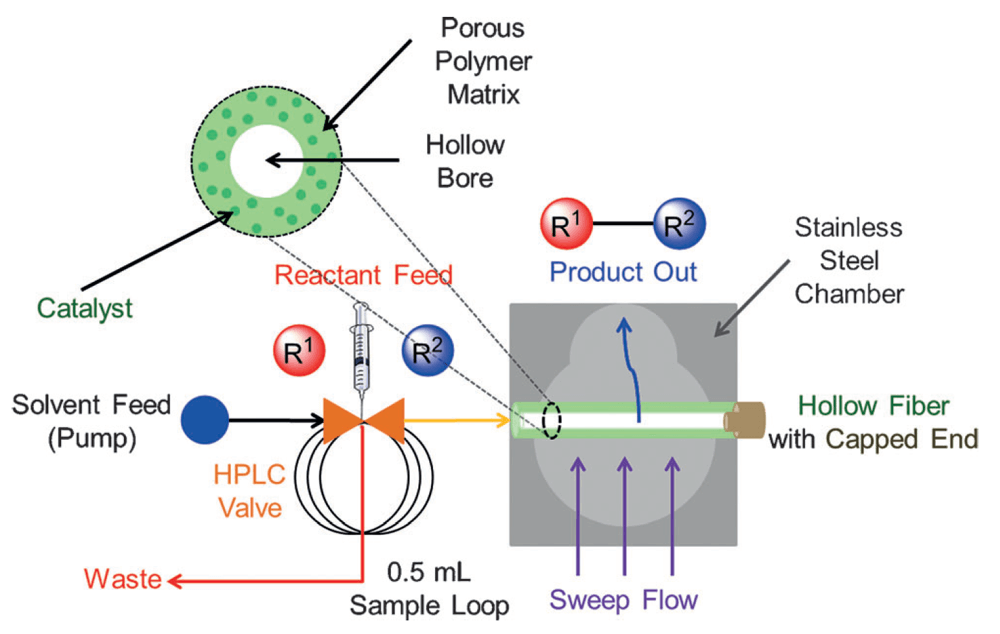Composite Polymer/Oxide Hollow Fiber Contactors: Versatile and Scalable Flow Reactors for Heterogeneous Catalytic Reactions in Organic Synthesis
E. G. Moschetta, S. Negretti, K. M. Chepiga, N. A. Brunelli, Y. Labreche, Y. Feng, F. Rezaei, R. P. Lively, W. J. Koros, H. M. L. Davies, and C. W. Jones
Angew. Chem. Int. Ed.,
2015, 54, 22, 6470-6474; 10.1002/anie.201500841

04/2015
In a collaborative project between the Jones and Davies Groups, a novel sweep flow reactor design is described, proving to be very effective in a range of synthetic transformations, including deprotections, C–C couplings and condensations and highly selective asymmetric C–H functionalizations.
Flow chemistry and flow reactor designs are emerging field in organic chemistry. These reactors can offer reactions profiles simply not possibly in the more traditional batch reactors with simple operation at high temperatures and pressures and safer handling of potentially toxic and explosive substances. However, there are many issues to consider in the design of flow reactors and the adaptation of organic reactions to these systems.
Hollow composite fibers are commercially used for industrial gas separations, where high surface areas are crucial. This work explores for the first time the application of these fibers to synthetic organic chemistry. The incorporation of different catalysts into the fibers allows the facile exploration of a number of reactions. While a simple deprotection and C–C coupling were used to provide a proof of principle, the focus of this report is the incorporation of immobilized chiral dirhodium catalysts into the fibers.
The Hollow fibers that incorporated the dirhodium catalysts were found to be extremely effective at catalyzing carbene chemistry, showing only a small reduction in yield and selectivity in both cyclopropanation and C–H Functionalization reactions. Furthermore, the stability of these reactors were effectively demonstrated with repeated reactions, with over 1200 turnovers with no appreciable reduction in selectivity.
Ongoing studies will be directed at the optimization of this system, the application to a variety of C–H functionalization reactions and eventually enhancing this system in comparison to the batch reactions and more the development of more practical procedures when highly reactive reagents are used.